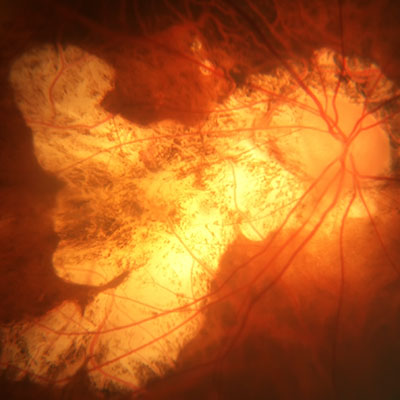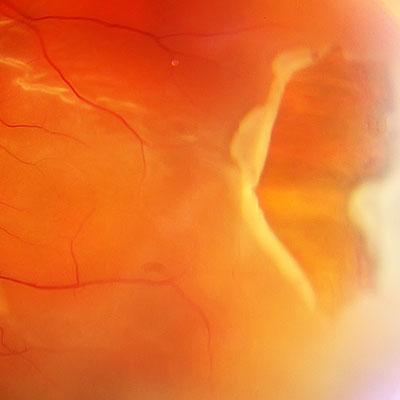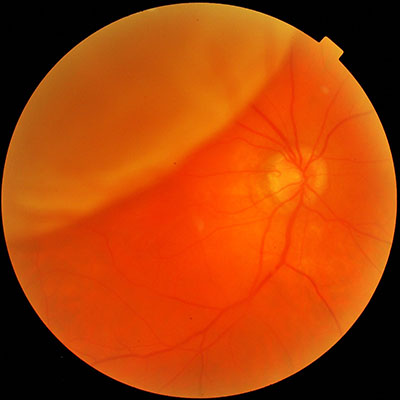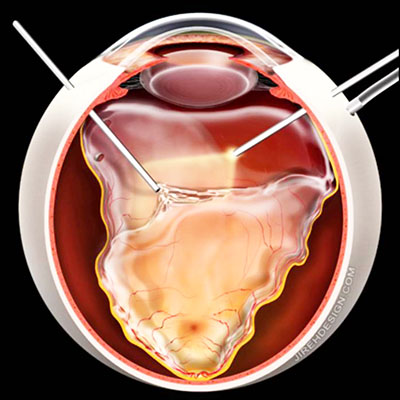The normal eyeThe human eye is incredible. As the eye ball grows in a child, the components of the eye normally develop in unison so that light is focused perfectly onto the retina at the back of the eye. Vision is sharpest when light is focused precisely on the retinal plane. This is how nature through evolution had programmed the normal eye to grow. The myopic eyeMyopia occurs when there is a disruption or variation to the normal growth of the eye ball. The myopic eye is elongated in shape, stretched longer than it should be, which means light from far away objects are focused in front of the retina rather than directly on it, resulting in blurred distance vision. |
What causes myopia?
Genetics and environmental factors both contribute to the development of myopia in children and adolescents.
A family history of myopia is a known risk — one or both parents with short-sightedness significantly increases the risk of the child developing it also.
Environmental influences include excessive near work, reading, studying, computer and tablet use, and time spent indoors. Significant growth of the eye occurs in children between the ages of 6 and 12. During this critical time, factors which increase the risk of abnormal elongation growth of the eye will result in myopia.
As society has developed with urbanisation, education and constant use of digital technology in everyday life from a young age, the evolution of the human eye has not kept up with these rapid changes. That's why myopia in children and young adults is dramatically on the rise. Myopia is becoming such a problem all around the world that it's been termed The Myopia Epidemic by eye experts and researchers.
A family history of myopia is a known risk — one or both parents with short-sightedness significantly increases the risk of the child developing it also.
Environmental influences include excessive near work, reading, studying, computer and tablet use, and time spent indoors. Significant growth of the eye occurs in children between the ages of 6 and 12. During this critical time, factors which increase the risk of abnormal elongation growth of the eye will result in myopia.
As society has developed with urbanisation, education and constant use of digital technology in everyday life from a young age, the evolution of the human eye has not kept up with these rapid changes. That's why myopia in children and young adults is dramatically on the rise. Myopia is becoming such a problem all around the world that it's been termed The Myopia Epidemic by eye experts and researchers.
Degree of myopia
Myopia is generally classified according to the degree of myopia, that is the power of the prescription lens required to correct the blurred vision, measured in dioptres (D). The higher the myopia, the greater the physical elongation of the eye.
Low myopia -0.50 to -3.00
Moderate myopia -3.00 to -6.00
High myopia -6.00 and above
Extreme myopia is sometimes used to describe myopia in excess of -10.00
Moderate myopia -3.00 to -6.00
High myopia -6.00 and above
Extreme myopia is sometimes used to describe myopia in excess of -10.00
In some countries, the amount of myopia may be specified in 'degrees'. For example, -6.00 is commonly referred to in Hong Kong and south-east Asia as 600 degrees of myopia (600 度近視), and -10.00 as 1000 degrees of myopia (1000 度近視), and so on.
The dangers of myopia
Having myopia is much more than just the inconvenience of having to wear glasses or contact lenses to see.
Myopia is a danger to the long-term health of the eyes. While glasses and contact lenses correct vision by refocusing light onto the retina, lenses do not address the underlying problem — that the eye is physically stretched and elongated. And that means the retina is thinner (think of an elastic band that's been stretched) and more prone to damage and disease.
Some of the potential consequences of high myopia are detailed below. There is no 'safe' level of myopia — even moderate myopia can have consequences — but the higher the myopia, the greater the danger of vision loss in an individual's lifetime.
Myopia is a danger to the long-term health of the eyes. While glasses and contact lenses correct vision by refocusing light onto the retina, lenses do not address the underlying problem — that the eye is physically stretched and elongated. And that means the retina is thinner (think of an elastic band that's been stretched) and more prone to damage and disease.
Some of the potential consequences of high myopia are detailed below. There is no 'safe' level of myopia — even moderate myopia can have consequences — but the higher the myopia, the greater the danger of vision loss in an individual's lifetime.
Consequences of high myopia
|
Glasses become thicker and heavier with higher levels of myopia. High-index lenses to reduce thickness add extra expense to each pair of new glasses.
|
High myopia is associated with cataract formation, and also increases the risk of complications during and after cataract surgery.
|
High myopia has been linked to a higher incidence of glaucoma, and development of more severe cases of glaucoma.
|
Myopia commonly causes earlier vitreous detachment, leading to many visually-disruptive spots and floaters and increases glare.
|
|
Thinning of the retina in a highly myopic eye increases the risk of developing myopic macular degeneration, causing loss of central vision.
|
A small tear in the retina can quickly develop into a retinal detachment, which, if not detected and managed promptly, can lead to permanent vision loss.
|
Symptoms of a retinal detachment may include flashes of light, sudden increase of floaters, and a large shadow moving across the line of sight.
|
Retinal detachment surgery to repair a torn retina and restore sight is a complex, risky and invasive procedure. Vision may never fully return to normal.
|
A message from Australia's leading myopia experts.
What every parent needs to know about childhood myopia (short-sightedness).
Vision is our most valuable sense.
You can help preserve your child's eyesight.
Eyecare Concepts | The Myopia Clinic © 2017-23
KEW EAST | MELBOURNE
KEW EAST | MELBOURNE














